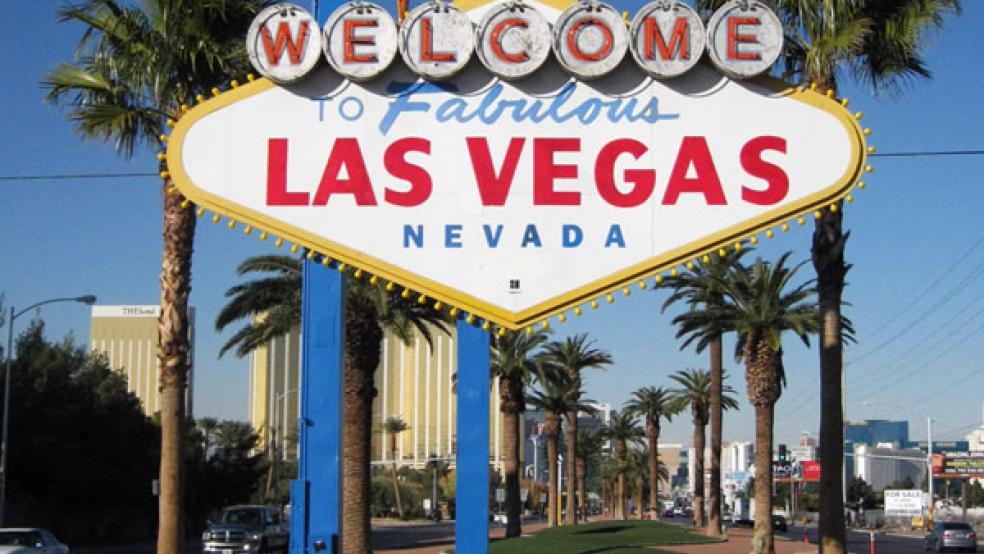While many states still haven’t fully recovered from the Great Recession, a new study by a bipartisan public policy group concludes that Nevada, Utah, Colorado and other states west of the Mississippi River have shown far more economic resilience and innovation than states in the eastern part of the country.
The report by the Economic Innovation Group uses seven indices to examine broad national economic trends that go beyond traditional benchmarks such as unemployment rates and economic growth.
Related: The 15 States Americans Are Ditching
The D.C.-based public-private research organization focused on what it termed “economic dynamism” in assessing the performance of the states. That includes activities such as the rate of new business formations and job creation, the frequency of turnover or “churn” in the labor market, labor force participation and the geographic mobility of the work force.
A previous EIG report, entitled “Dynamism in Retreat: Consequences for Regions, Markets, and Workers,” warned of a “crisis of lost dynamism” driven largely by a collapse in new business formation following the recession.
The creation of new firms significantly diminished following each of the past four economic recoveries, the report found. The U.S. economy added only 104,600 businesses between 2010 and 2014, compared to nearly a half million between 1983 and 1987.
“There is a growing concern that the U.S is becoming fundamentally less dynamic, raising questions about what such a shift holds for the nation’s prosperity and competitiveness in years ahead,” according to EIG.
Related: The 10 Worst States for the Deadly Drug Crisis
The group’s latest report, an “Index of State Dynamism,” applies EIG’s economic matrix and methodology to evaluate and rank all 50 states. Among the reports more trenchant findings:
- The decline of dynamism has been “steep, rapid, and pervasive across all states” going back to the early 1990s.
- Practically every state suffered a decline in dynamism during the recession and has struggled to recover.
- The gap between the most dynamic and least dynamic states has narrowed over the years, so that today no one state can claim vast economic superiority over another.
Still, there are notable differences between the top tier and the lowest tier.
For instance, nine of the 10 most dynamic states – Nevada, Utah, Colorado, North Dakota, Texas, California, Arizona, Idaho and Wyoming – are located west of the Mississippi River, while only Florida is located in the Southeast.
By the same token, eight of the 10 least dynamic states – West Virginia, Ohio, Mississippi, Pennsylvania, Indiana, Wisconsin, Michigan and Connecticut – are located east of the Mississippi, including six that are industrial states clustered around the Great Lakes. The other two least-dynamic states are Iowa and Hawaii.
Related: States Face a $1 Trillion Pension Problem - Here Are the Worst 10
Moreover, dynamic states tend to be “newer,” meaning they have a younger population and a newer housing stock. And dynamic states tend to have larger shares of foreign-born residents with their populations than do the least dynamic states. The least dynamic state economies also tend to be “the most manufacturing-dependent” and have the least developed information services sectors.
Here are the 10 most dynamic and the 10 least dynamic states, according to the Economic Innovation Group:
The 10 Most Dynamic States:
1. Nevada (50.5 out of 100 in the dynamism index)
2. Utah (45.9)
3. Florida (45)
4. Colorado (44.9)
5. North Dakota (44)
6. Texas (43.5)
7. California (40.9)
8. Arizona (39.9)
9. Idaho (39.4)
10. Wyoming (38.4)
The 10 Least Dynamic States (including Washington, D.C.):
42. Connecticut (24.6 out of 100 in dynamism index)
43. Michigan (24)
44. Wisconsin (23.8)
45. Hawaii (23.5)
46. Iowa (23.1)
47. Indiana (22.6)
48. Pennsylvania (22.1)
49. Mississippi (21.9)
50. Ohio (21.3)
51. West Virginia (17.6)





